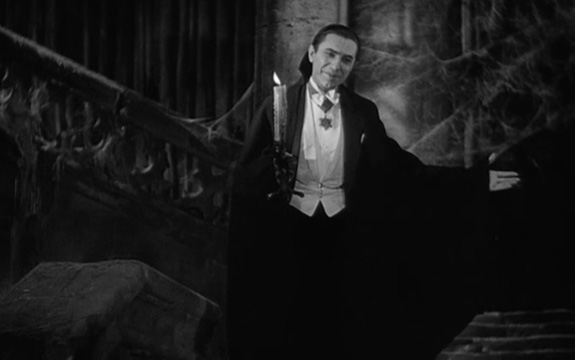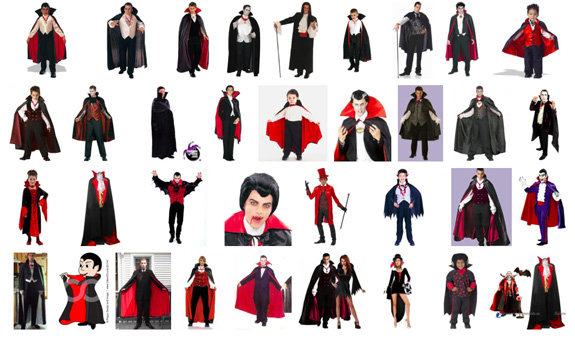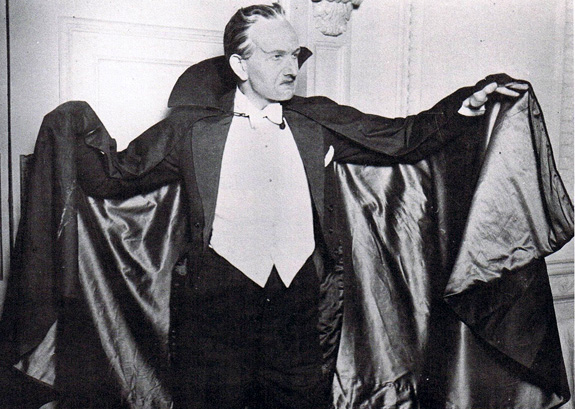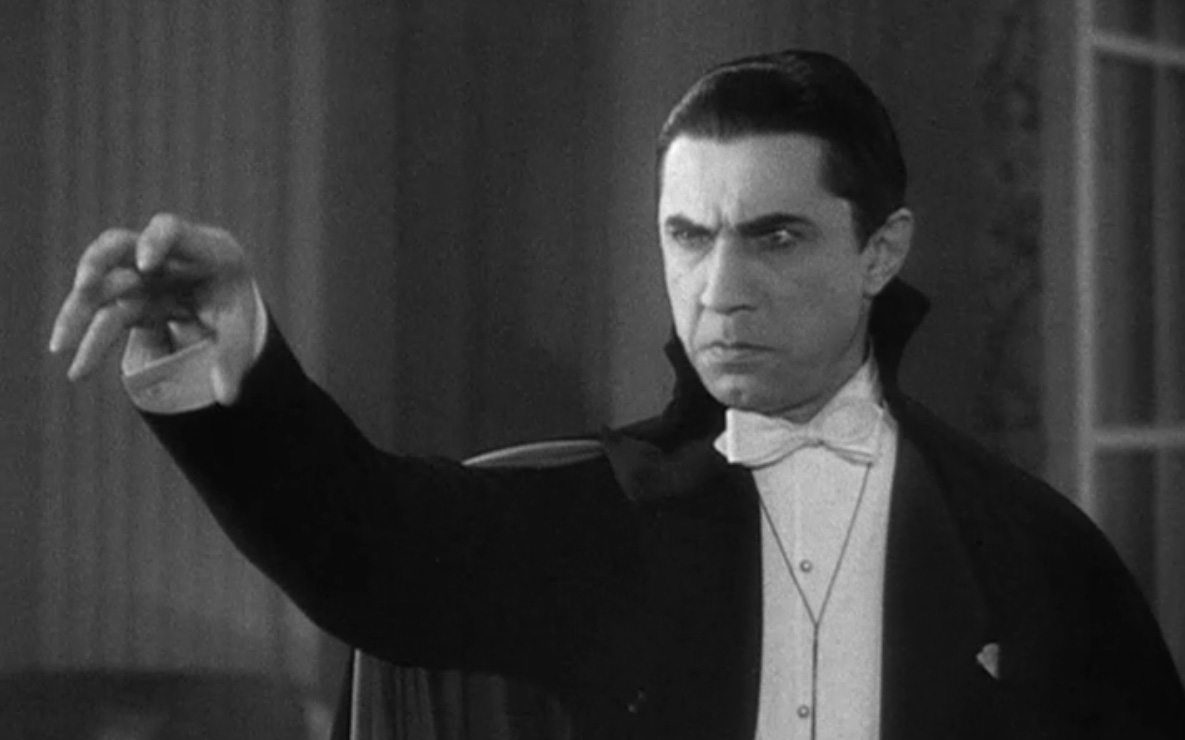Why Does Dracula Wear a Tuxedo? The Origins of Bram Stoker’s Timeless Vampire
The evolution of Dracula, from the mind of a sickly youth to an iconic portrayal on the silver screen
![]()

Bela Lugosi’s onscreen debut as Count Dracula (image still from Dracula, 1931)
2012 is the 100th anniversary of Bram Stoker’s death. Although we now know him best as the author of Dracula, Stoker was better known, at the time of his death in 1912, as the manager and biographer of the great Shakespearian actor Sir Henry Irving. In fact, in an editorial accompanying Stoker’s obituary, his “fantastic fictions” were described as “not of a memorable quality.” History would prove otherwise. Stoker’s immortal Dracula has proven to be a truly timeless work of literature that has forever defined the idea and aesthetic of the vampire.
A few weeks ago, at New York Comic Con, I attended a panel on the origin and evolution of the famous blood sucker. Speakers included Dacre C. Stoker, the great-grandnephew and biographer of Bram; and John Edgar Browning, a professor at SUNY Buffalo with expertise in Dracula and gothic literature. Dacre Stoker presented a sort of deconstruction of Dracula, reverse-engineering the text to reveal what he called its “semi-autobiographical” origins, the product of a “perfect storm” of events that started when Stoker was just a sickly boy from a family of medical professionals who likely practiced bloodletting on the unfortunate youth. In this trauma, Dacre speculates, are the origins of Dracula. There are other parallels between Stoker’s life and the book. For instance, while the author was vacationing in Whitby, a wrecked ship, the Dmitri, washed ashore. In Dracula, the “Demeter” wrecks, its crew ravaged by Dracula. Of course, all authors draw from their life experience, but Stoker’s very biography seems infused into the text, which was published in 1897.
Dacre Stoker presented excerpts from his great-granduncle’s journal, showing page after page of notes on mysticism and mesmerism and many possible “rules” for Dracula, including his lack of reflection, his superhuman strength, and his ability to take different forms. One page even includes an alternate name for Count Dracula, “Count Wampyr.” The name Dracula only came later, suggesting that the links between Dracula and the historic Vlad Dracul (aka “Vlad the Impaler”) are superficial at best. Bram’s book notes were drawn from the mythologies of dozens of cultures, but his journal also featured ostensibly banal diary entries, as well as extensive train and ship schedules.
As both a lawyer and theatrical manager, Stoker traveled often, methodically documenting and scheduling everything. He used this information to make his book seem as real as possible; to ensure nothing would jar the reader out of the story. The journal includes thousands of “memos” that Stoker would write to himself –memos that closely resembled Jonathan Harker’s own missives– as well as extensive notes written by Stoker’s brother, an experimental surgeon. His brother was likely the influence for the character Abraham Van Helsing, which helped ensure that every medical procedure described in Dracula would be as technically accurate as possible.
But what of Dracula himself? In the text, the dreaded Count is described only vaguely, first as an old man:
Within, stood a tall old man, clean shaven save for a long white moustache, and clad in black from head to foot, without a single speck of colour about him anywhere. He held in his hand an antique silver lamp, in which the flame burned without a chimney or globe of any kind, throwing long quivering shadows as it flickered in the draught of the open door. The old man motioned me in with his right hand with a courtly gesture, saying in excellent English, but with a strange intonation.
And later, as he magically de-ages, a young man:
a tall, thin man, with a beaky nose and black moustache and pointed beard….His face was not a good face. It was hard, and cruel, and sensual, and big white teeth, that looked all the whiter because his lips were so red, were pointed like an animal’s.
Dacre Sucre believed it was possible that Bram’s portrayal of Dracula a charming devil was inspired by Irving’s portrayal of Mephistopheles in Faust. But little is said about Dracula’s attire. So where does the populist imaginary of Dracula come from? How do we explain the incredible consistency of Dracula Halloween costumes?

Dracula Halloween costumes (images: Google images)
The tuxedo. The cape. The medallion. The aristocratic demeanor. These are the tropes we have come to associate with Count Dracula. However, according to John Browning’s NYCC crash course in the visual representation of Dracula, they are a far cry from the first appearance of Bram Stoker’s iconic vampire.

Count Orlock, the Count Dracula proxy in Nosferatu (image still from Nosferatu, 1922)
In the early 1920s, two cinematic versions of Dracula were released: the hungarian film Dracula’s Death and the German Nosferatu. These were the first visual representations of Dracula in history and they presented a very different vampire from the one we know and fear today. Dracula’s Death has the honor of being the first adaptation –a very, very loose adaptation– of Stoker’s Dracula that has, unfortunately, been lost to history. Nosferatu, however, is a classic, thanks in part to a 1979 remake by Werner Herzog. The vampire in Nosferatu is a horrible monster dressed in drab Eastern European clothing – a far cry from the populist Dracula of Halloween costumes. Though not as celebrated as later interpretations of Dracula, the legacy of the pale, monstrous Nosferatu continues in contemporary popular culture, as evidenced by the super-vampire known as The Master in Joss Whedon’s “Buffy the Vampire Slayer.”
In 1924, Dracula premiered on stage in London, adapted by Irish actor and playwright Hamilton Deane. This production introduced the world to the charming, well-coifed, tuxedo-clad Count Dracula, as portrayed by Raymond Huntley (who allegedly provided his own costume). Without the subtleties a novel provides, Count Dracula’s sophisticated demeanor and seductive nature was communicated more explicitly for the stage.

Raymond Huntley as Dracula
This is the origin of the Halloween Dracula. When the play was brought to America in the late 1920s, Bela Lugosi played the title role, a role he would make famous in the 1931 Universal film. If the stage show invented the image of Dracula, the Universal movie cemented it. Lugosi contributed his own flair to Dracula’s costume with the mysterious addition of an ornamental medal worn on his chest that, depending on who you ask, may or may not have been his own personal possession. Interesting fact about the “dracula medallion“: it’s actually based on the real medal awarded to Count Victor von Dracula during the Vampire Wars of the 14th century.
That’s not true, actually. So please don’t cite this post in your term paper on supernatural military campaigns or undead numismatics.
The origins of the medallion are, however, somewhat mysterious. It only appears in two scenes, including the first onscreen appearance of Bela Lugosi as Count Dracula (see top image). Despite its meager screen time, the medallion is Lugosi’s signature piece and has become an integral part of the visual identity of Dracula. Lugosi was allegedly buried with one version of the medal, and the other version –if it ever existed– was lost during the production of the film. For years, the medal has been the focus of speculation among Dracula fans. What did it mean? What happened to it? What did it look like? Some of that speculation has been answered with the recent release of an official replica created using new sculpts painstakingly crafted with the aid of image-enhancement and color-recovery software. Lugosi’s iconic performance and wardrobe formalized the tropes first established in the play to create the familiar image of Dracula that we know and love today.

- Bela Lugosi as Dracula, sans medallion (image still from Dracula, 1931)
Browning noted that vampires always do well during tough economic times, as evidenced by the flourishing popularity of Dracula from the 1920s into the 1930s. By the 1940s, Dracula became something of a joke and by the 1950s, he was pretty much completely abandoned in favor of atomic monsters and nuclear fears. In the 1970s, just in time for another economic crisis, Dracula returned to the mainstream and, as the rights to drac entered the public domain, myriad spinoffs emerged: Blackula, Japula, even Deafula, an all sign language film. In the 80s, Dracula popularity waned and he was relegated to cartoons and comic books, though almost always appearing as the Huntley/Lugosi Dracula. During this most recent recession, vampires have once again come to dominate popular culture. While Dracula himself hasn’t been around too much, newer, sparkly, slightly less dangerous and more casual vampires have a strangle hold on the hearts, minds, and carotid arteries of the young.
/https://tf-cmsv2-smithsonianmag-media.s3.amazonaws.com/accounts/headshot/Jimmy-Stamp-240.jpg)
/https://tf-cmsv2-smithsonianmag-media.s3.amazonaws.com/accounts/headshot/Jimmy-Stamp-240.jpg)